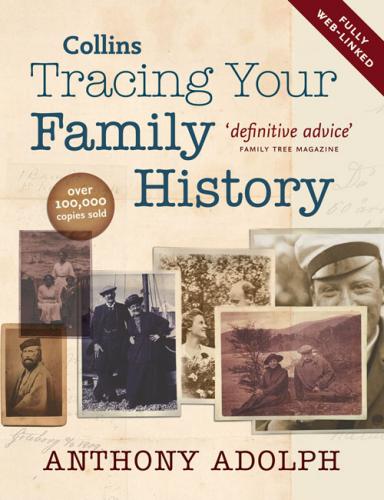new-style Gregorian calendar, which starts the year on 1 January. The Julian calendar started to die out among lay people in the Tudor period, and by the 18th century it is often hard to tell whether a date is being given in old style or new style.
A member of Pop Gregory’s commision on the calendar pointing out the backslide of the Julian calendar.
Different countries changed to the Gregorian calendar at different times. Most of Western Europe changed in 1582, Scotland in 1600, England and Wales in 1752 and Russia and the Balkans in the 20th century. Therefore, a letter written in France on 1 February 1610 was likely to have been written just under a year before one dated 25 January 1610 in England.
It also means that dates appearing in old records need adjusting to make sense in modern terms. A baptism recorded in a PR on 24 January 1722 would, in modern terms, have taken place on 24 January 1723 because, under the old calendar, New Year’s Day (25 March) had not yet arrived.
To avoid confusion, researchers tend to record the date using ‘double dating’, recording the old-style year followed by the new-style year, i.e. 24 January 1722/3. Never, when you see this, strip out the ‘old’ date and just write 24 January 1723, because someone else may come along, realise that 23 January is before 25 March, not realise that you’ve already adjusted for double dating and write 24 January 1724 instead.
On the International Genealogical and Vital Records indexes (see here), dates are allegedly adjusted but without double dating. Non-conformist registers were using new-style dating well in advance of 1752.
Another difference between the Julian and Gregorian calendars was that the latter used leap years and the former didn’t. By the time Pope Gregory introduced the new calendar in 1582 the lack of leap years had already caused the old-style date to lapse ten days behind the solar year, so he simply ordered ten days to be cut out off 1582, between 4 and 15 October. Because England persisted with the old calendar, it sunk increasingly behind Europe, and was 11 days behind by the 17th century. Therefore, events that share the same dates in different countries, such as the deaths of Shakespeare and Cervantes on 23 April 1616 in England and Spain respectively, actually took place 11 days apart. England and Wales cancelled the days between 2 and 14 September 1752 to catch up with Europe.
COMMON ABBREVIATIONS AND ACRONYMNS
Someone in AGRA or the SoG will know how to work back from GRO records at TNA and PPR and maybe stuff in class WO 97 at TNA (the old PRO) back via the IGI to CMBs taken from PRs or BTs on mf at CROs. I have tried to keep acronymns and abbreviations to a minimum in this book, but here are the main ones I have used together with some additional acronymns you will encounter in the outside world.
|
AGRA
|
Association of Genealogists and Researchers in Archives
|
|
BT
|
bishop’s transcript
|
|
CMB
|
baptisms, marriages and burials
|
|
CRO
|
county record office
|
|
FFHS
|
Federation of Family History Societies
|
|
FHS
|
Family History Society
|
|
FRC
|
Family Records Centre
|
|
GRO
|
General Register Office (records are searchable at the FRC)
|
|
HMC
|
Historic Manuscripts Commission (now TNA)
|
|
IGI
|
International Genealogical Index
|
|
IHGS
|
Institute of Heraldic and Genealogical Studies
|
|
NAS
|
National Archives of Scotland
|
|
PCC/PCY
|
Prerogative Court of Canterbury/York
|
|
PPR
|
principal probate registry
|
|
PR
|
parish register
|
|
PRO
|
Public Records Office (now TNA)
|
|
PRONI
|
Public Record Office of Northern Ireland
|
|
SoG
|
Society of Genealogists
|
|
TNA
|
The National Archives (ex-PRO and HMC)
|
LATIN
Few things terrify genealogists as much as the use of Latin in old records. Sorry, but that’s the way things were and we’ve got to live with it. If you really can’t cope with basic Latin there are some very good, modestly priced translators, but often you should be able to manage, however poor or non-existent your school-book Latin. Remember, you were not alone and many of the compilers of the records had only the most tenuous grasp of the language, and therefore used it very basically and often with English rather than Latin word orders and plenty of stock phrases.
Especially in parish records, Latin is scarcely an impediment to understanding. That ‘Petrus filius Ricardus et Gracia Smith’ means ‘Peter son of Richard and Grace Smith’ will surprise few. However, just because ancestors’ names were recorded in Latin does not mean they ever used them thus: when Ricardus Smith went to the pub in the evening he was plain Dick and should appear on the family tree as Richard.
Good guides to Latin include E. A. Gooder’s Latin for Local History: An Introduction (Longmann, 1978) and R. A. Latham’s Revised Medieval Latin Word-list from British and Irish Sources (OUP, 1965). There is also one online at www.genuki.org.uk.
SOME COMMONLY USED LATIN WORDS
